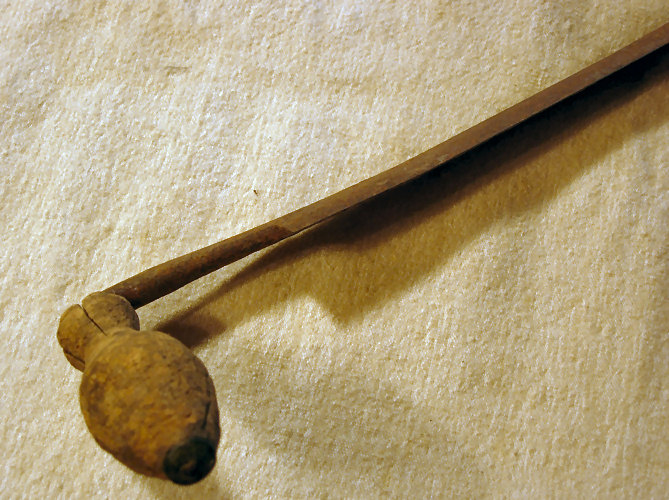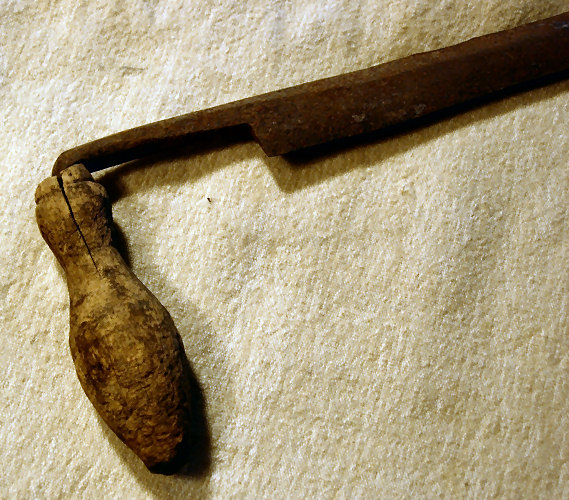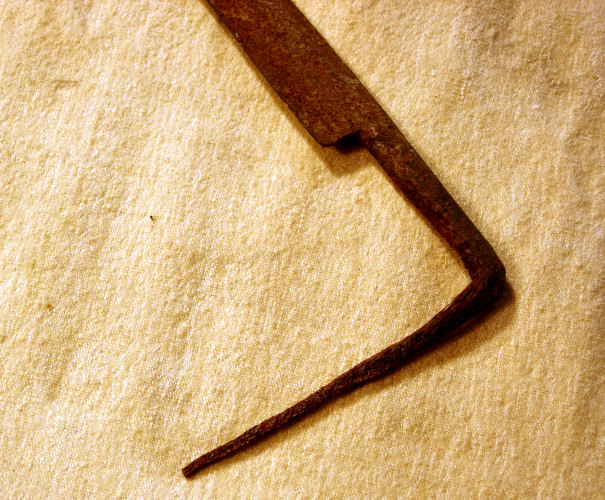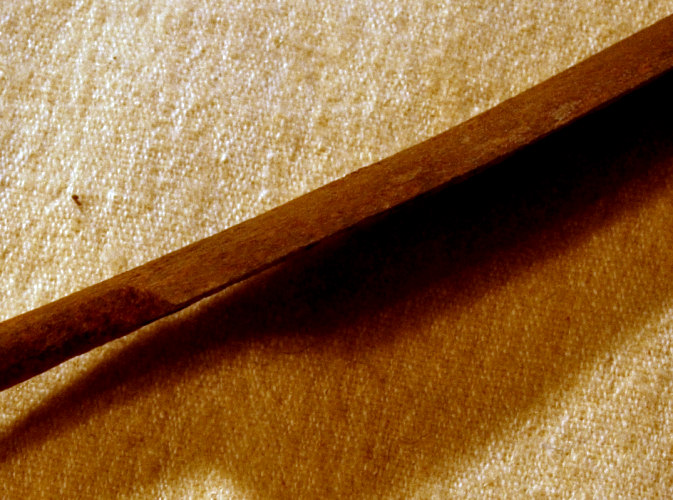

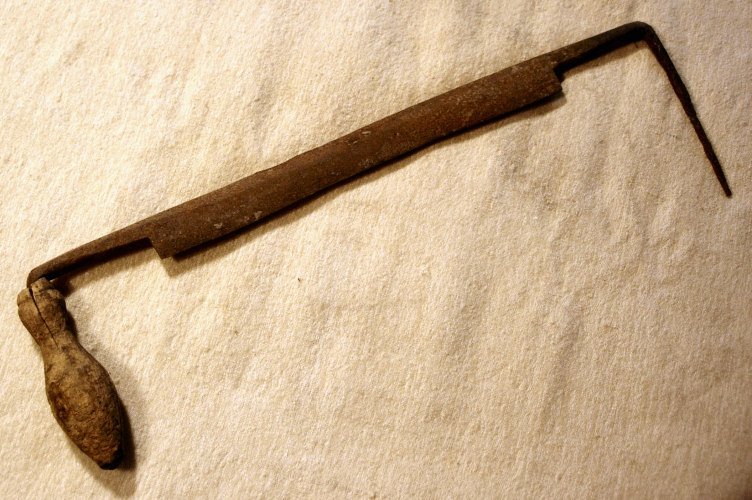
| The drawknife was an important tool in the toolbox of numerous occupations. Drawknives were used by carpenters to plane rough boards smooth and to shape riven shingles; they were used by coopers to shape flat boards into staves to make barrels; and they were used by wheelwrights to shape spokes. This particular example appears to be made of wrought iron and fabricated by a blacksmith. The drawknife, sometimes called a shave knife in general, or by other names according to specialized uses, made the job of whittling and shaping wood with a knife much easier. Instead of pushing the knife away from his body, and with only one hand controlling it, the user of a drawknife grasped the tool with both hands and pulled it toward his body. The drawknife consisted of a long, narrow iron or steel blade with one long side being beveled into a sharp cutting edge. The two extremities of the knife blade formed slender tangs, both of which were bent ninety degrees forward (in the direction of the cutting edge / toward the user). Wooden handles were then attached over the tangs. To use the drawknife, the material to be worked needed to be held in place somehow. The most common type of vice used prior to the industrial age was the wooden shaving horse. A piece of wood to be shaped was placed between the head and the table of the shaving horse; the head was held tight by the user pushing on the foot piece. The user would position the drawknife's cutting edge against the tightly held piece of wood, and 'draw' it toward himself, allowing the knife's edge to dig into the wood in the same way that a plane would. The drawknife would dig deep into the wood if the user pushed down on the handles as he drew it toward himself; it would just shave a thin portion if he held the handles more in line with the plane of the piece of wood being worked. |
